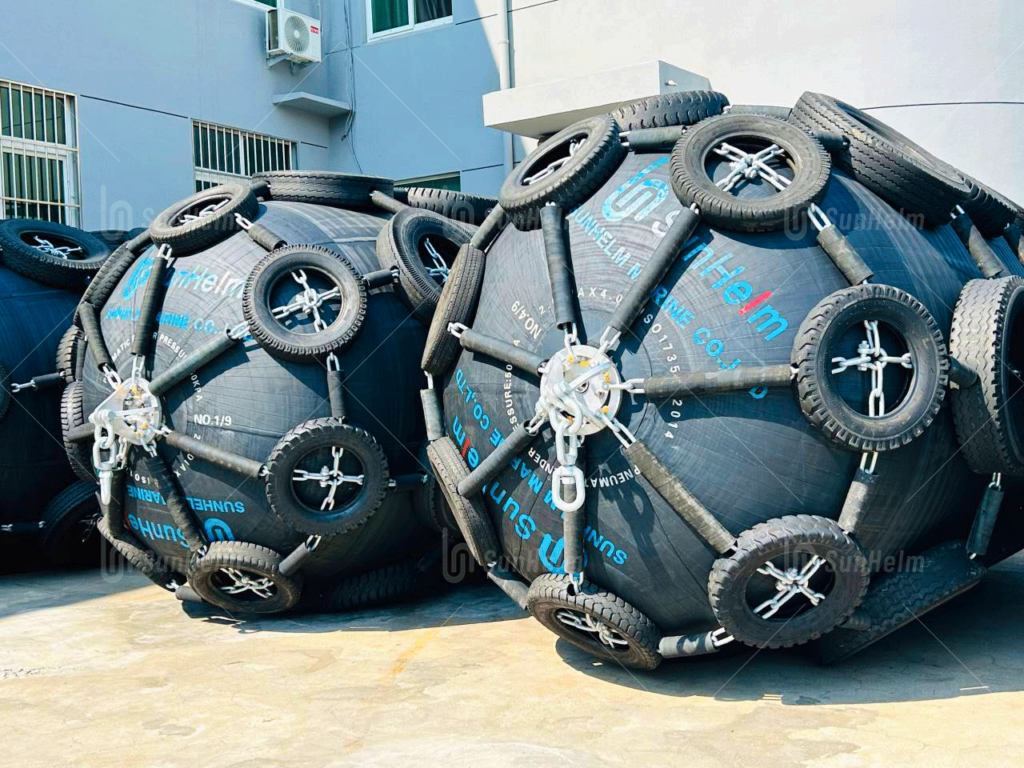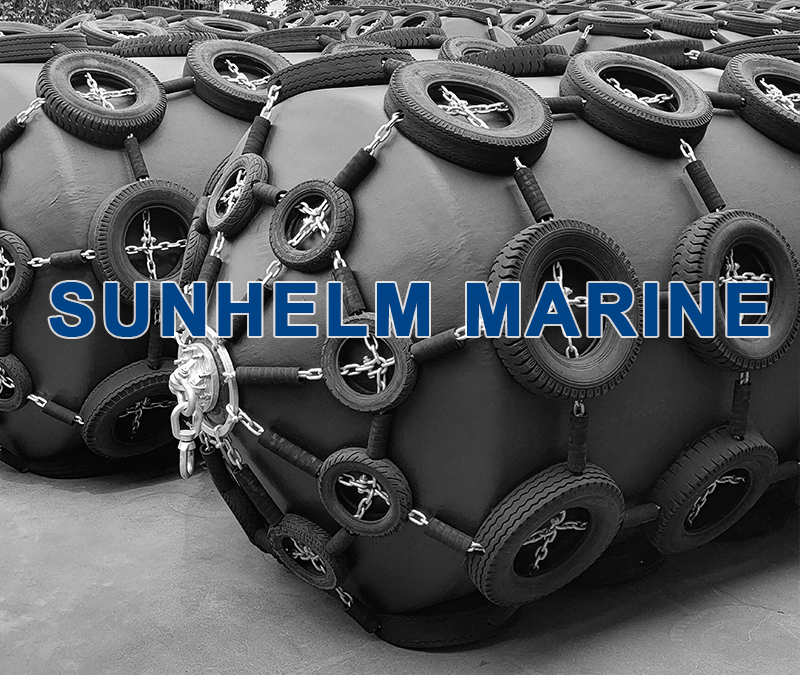Ports and shipyards face clear pressure: bigger ships, busier terminals, and tighter schedules. These changes make fender choice more than a technical detail. A smart fender choice protects infrastructure, speeds operations, and lowers long-term cost. For many projects today, pneumatic rubber fenders — especially floating pneumatic rubber fenders — are the best answer.

Market and demand are growing — backed by data
The global market for pneumatic fenders is expanding. Recent industry reports show steady market growth and healthy forecasts for the next few years. This growth comes from increased ship-to-ship transfers, expanding terminals, and rising offshore activity — all places where pneumatic fenders excel.
At the same time, global container throughput recovered strongly in 2024 and continues to grow. More port activity means more berthing events and more wear on fenders. Ports that plan ahead are ordering modern fender systems now, not later.
Why pneumatic rubber fenders matter for modern ports and shipyards
- High energy absorption, low reaction load. Pneumatic fenders use compressed air to absorb impact. They cushion big vessels while keeping stress on your quay or ship low. This matters most when berthing large container ships, car carriers, or tankers.
- Proven for ship-to-ship and temporary mooring. For ship-to-ship transfers and temporary berthing, floating pneumatic rubber fenders give predictable performance and fast installation. Many operators prefer them when operations change quickly.
- Flexible maintenance and long life when managed right. A well-specified pneumatic fender gives years of reliable service. They are easier to inspect and repair than some solid types, especially when downtime costs are high.
Practical drivers pushing demand right now
- Port expansions and upgrades. New terminals and expansions are fresh demand sources. When ports add quays or upgrade berths to handle larger ships, they buy new fender systems. Recent port investments worldwide show this trend.
- More ship-to-ship operations. Bunkering, lightering, and transfer work drive the ship-to-ship segment. That segment is a top use case for pneumatic fenders and a major growth area in market reports.
- Regional pockets of strong growth. North America, the Middle East, and South Asia showed notable throughput growth in recent data. These regions are active buyers for berthing and floating fenders.
Cost and value: not just price, but total cost of ownership
Pneumatic fenders often cost less up front than some heavy, bespoke solid fenders for temporary or flexible needs. More importantly, they reduce indirect costs: faster installation, less quay damage, and fewer operational delays. For designers and shipyards, that means easier project schedules and lower lifecycle cost. Case studies and product comparisons back this up.
How to decide which pneumatic solution fits your project
- Permanent quay vs temporary berth: For permanent quays that handle the same vessel classes daily, consider heavy-duty wrapped or molded pneumatic fender sized for peak loads. For temporary berths or ship-to-ship, floating pneumatic rubber fenders offer fast setup and strong performance.
- Ship types and sizes: Use contact area and compression figures to match fender size to vessel beam and mass. Larger vessels need larger, lower-reaction fenders. Manufacturers publish performance tables to help you pick.
- Installation and support: Choose suppliers with clear installation guides and local support. Quick installation saves crane time and berth downtime — and that saves real money.
Design tips to get the most from pneumatic fenders
- Design for the worst credible case, not the average. Size your fenders for the largest vessel you expect to see, or for tandem operations if you plan S2S work.
- Plan access for inspection and maintenance. Make sure you can safely inspect valves, chains, and covers without taking berths out of service.
- Combine with a sensible mooring and berthing layout. Fender performance improves when berthing lines and fender panels work together. A systems approach reduces peak loads and wear.
Real-world signals that buyers should watch (and act on)
- If your port is planning berth deepening, new container capacity, or more S2S operations, that is a clear buying signal. Ports that delay fender upgrades often face higher repair bills and longer downtime later. Recent port investments and throughput growth are already pushing procurement.
Short checklist for procurement teams (quick win)
- Confirm vessel types and maximum design pressures.
- Choose between wrapped, molded, or fabric-reinforced models based on your needs.
- Get lifecycle cost estimates (installation, downtime, repairs).
- Ask vendors for references from similar ports or shipyards.
The bottom line — why buy now
Global drivers — port expansion, rising throughput, and growth in ship-to-ship work — are increasing demand for pneumatic fenders. For designers and shipyards, this is a moment to turn planning into action. Choosing the right pneumatic rubber fenders or floating pneumatic rubber fenders now protects quays, cuts indirect costs, and keeps operations smooth as ship sizes and terminal activity grow. Market reports and port data show this is not a niche trend — it is mainstream procurement.
FAQ about Pneumatic Rubber Fenders
Q1: How long do pneumatic rubber fenders last?
With proper care, pneumatic rubber fenders can last 10–15 years. Regular checks on air pressure, chain nets, and covers will extend their life.
Q2: Are floating pneumatic rubber fenders suitable for both ports and ship-to-ship operations?
Yes. They work very well in both cases. For ports, they protect the quay during berthing. For ship-to-ship transfers, they give quick and safe installation.
Q3: What is the main advantage of pneumatic fenders compared to solid fenders?
They absorb more energy with lower reaction force. This makes them safer for large ships and reduces stress on port structures.
Q4: Do pneumatic rubber fenders need special installation?
No. They are flexible and easy to install. Floating pneumatic rubber fenders can be deployed with chains and ropes in a short time.
Q5: How do I choose the right size?
Match the fender size to your largest expected vessel. Check the supplier’s performance charts for energy absorption and reaction load values.


